Today's VAR thread is mainly a handball special.
- Explaining why the Liverpool penalty was correct (including quotes from UEFA refs' chief)
- How law change brought a goal for Gabriel
- Possible Newcastle handball
Plus a bit on pitchside monitor use.
- Explaining why the Liverpool penalty was correct (including quotes from UEFA refs' chief)
- How law change brought a goal for Gabriel
- Possible Newcastle handball
Plus a bit on pitchside monitor use.
Let's start with the penalty given to Liverpool for the handball by Leeds' Robin Koch.
This passage from the official Prem website, and the Laws of the Game, has been doing the rounds. It suggests that all deflections onto the hand cannot be an offence. It's not the case.

This passage from the official Prem website, and the Laws of the Game, has been doing the rounds. It suggests that all deflections onto the hand cannot be an offence. It's not the case.
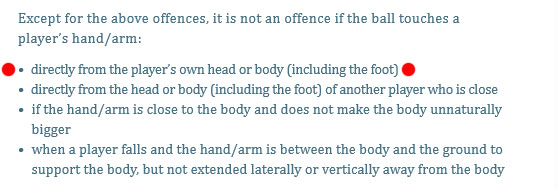
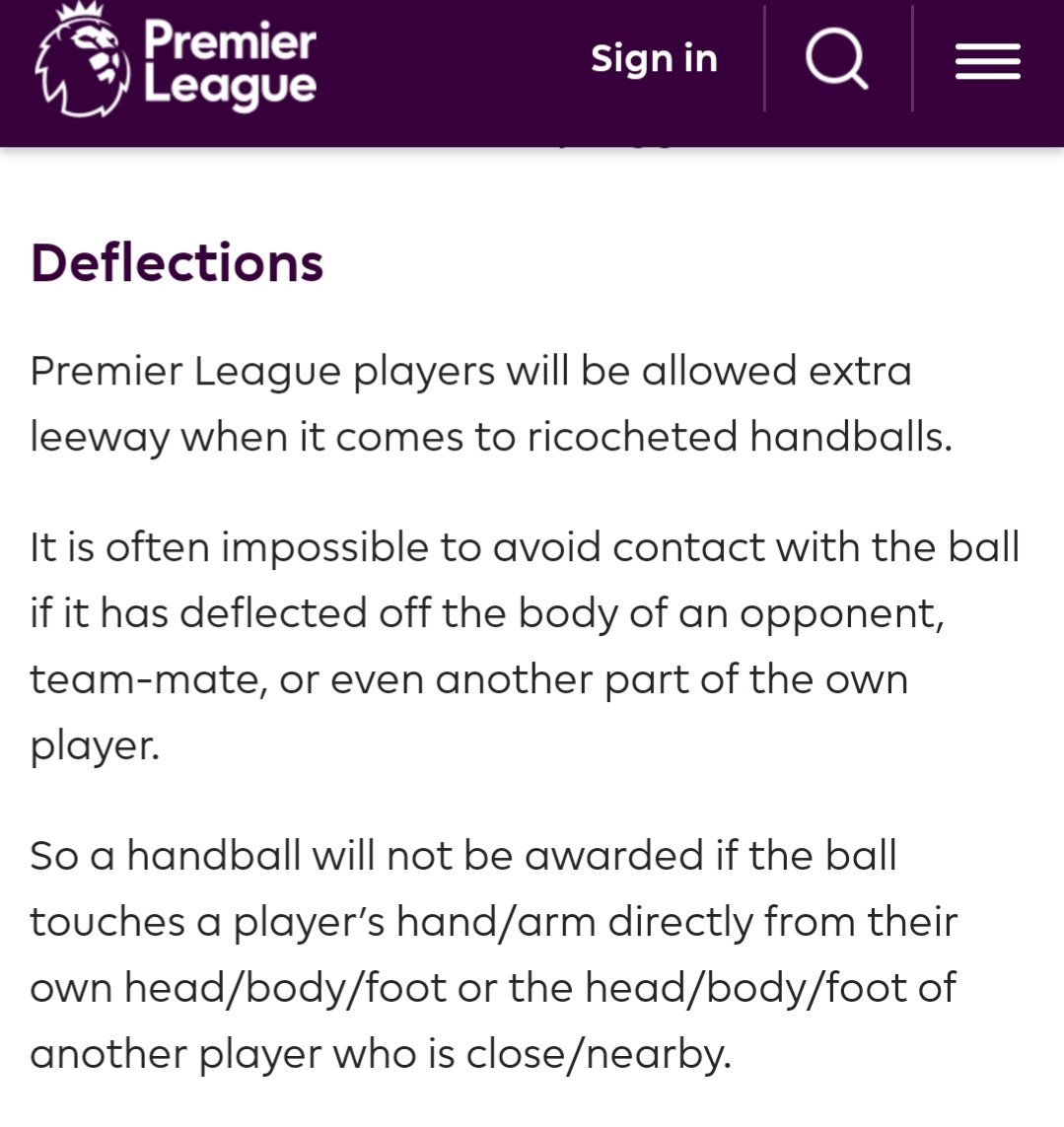
As is the case with many laws as written in the basic LOTG, they only touch the surface of interpretation and application.
Remember, until this summer the LOTG never said in black and white which part of the arm was handball. It was learned/trained knowledge.
Remember, until this summer the LOTG never said in black and white which part of the arm was handball. It was learned/trained knowledge.
The handball law, as it is now, came into forced in the summer of 2019.
So to give proper context for handball following a deflection, let's take the quotes from UEFA's head of referees, Roberto Rossetti. These were given in January 2019 ahead of the law coming in.
So to give proper context for handball following a deflection, let's take the quotes from UEFA's head of referees, Roberto Rossetti. These were given in January 2019 ahead of the law coming in.
Roberto Rossetti said of deflections leading to handball: "The big challenge is the position of the arm ... If the defender is making the body bigger in order to block the ball it is not fair.
"It is different if the defender is challenging or playing the ball and it rebounds."
"It is different if the defender is challenging or playing the ball and it rebounds."
Roberto Rossetti continues: "If he is looking to block a cross or a shot on goal and the player is trying to spread his body then it is a handball."
So there are two key points:
1) Position of the arm
2) Is it is deliberate play of the ball or a block?
So there are two key points:
1) Position of the arm
2) Is it is deliberate play of the ball or a block?
A few months later, just before the law changed, Tottenham midfielder Moussa Sissoko conceded a penalty in the UCL final where the ball hit his outstretched arm off the chest.
Many assumed the new wording on deflections meant the Sissoko handball would not be penalised anymore.
Many assumed the new wording on deflections meant the Sissoko handball would not be penalised anymore.
Rossetti made it clear before 2019-20 began that the Sissoko handball remains a penalty even after the change.
"This is a correct decision now and next season. It's a penalty. It doesn't matter if ball touched before the chest and then the arm of the player, it's a penalty."
"This is a correct decision now and next season. It's a penalty. It doesn't matter if ball touched before the chest and then the arm of the player, it's a penalty."
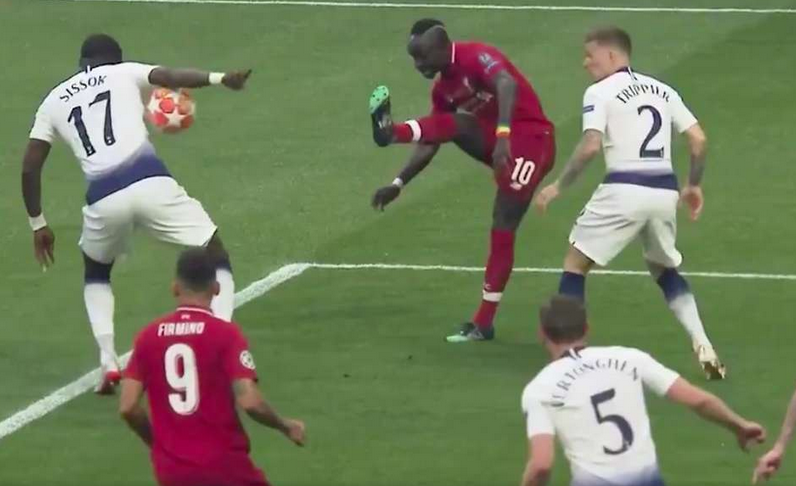
So, coming back round to the Koch penalty, Michael Oliver's decision clearly falls into Rosetti's description.
Koch's arm was way out from his body, making it much bigger, and it was a block rather than attempt to play the ball. Therefore, the deflection is irrelevant.
Koch's arm was way out from his body, making it much bigger, and it was a block rather than attempt to play the ball. Therefore, the deflection is irrelevant.
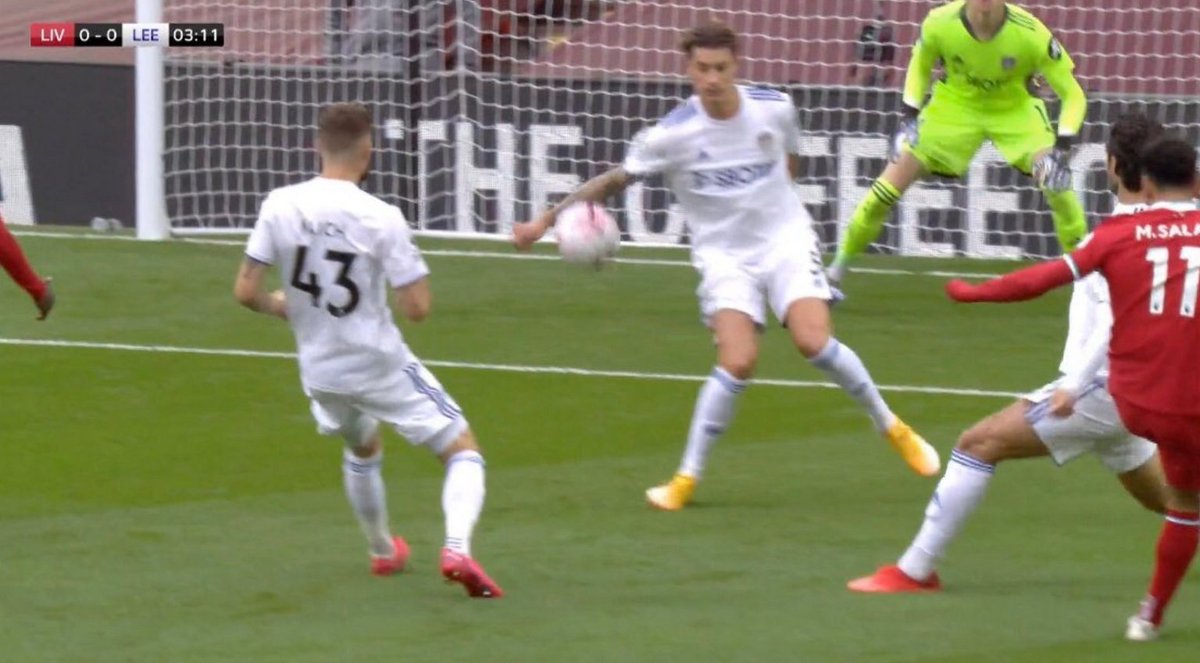
It's unlikely this would have been a penalty last season, when the PL operated its own defensive handball interpretation.
But FIFA has told the PL to fall in line and apply defensive handball much more strictly, as in Europe. As I wrote last week, we will see a lot more pens.
But FIFA has told the PL to fall in line and apply defensive handball much more strictly, as in Europe. As I wrote last week, we will see a lot more pens.
Jairo Riedewald's handball penalty was cancelled by the VAR last season after the ball deflected onto his hand from the foot.
Key difference: is Riedewald attempting to play the ball (vs. just blocking it)? That's subjective of course and refs would have differing opinions.
Key difference: is Riedewald attempting to play the ball (vs. just blocking it)? That's subjective of course and refs would have differing opinions.

We can see the difference in the claim for a penalty against Jeff Hendrick for Newcastle at West Ham.
The player's arm is down by his side, and not making his body bigger, as per the laws.
NB: It probably is handball by point of contact alone, but it's borderline.

The player's arm is down by his side, and not making his body bigger, as per the laws.
NB: It probably is handball by point of contact alone, but it's borderline.
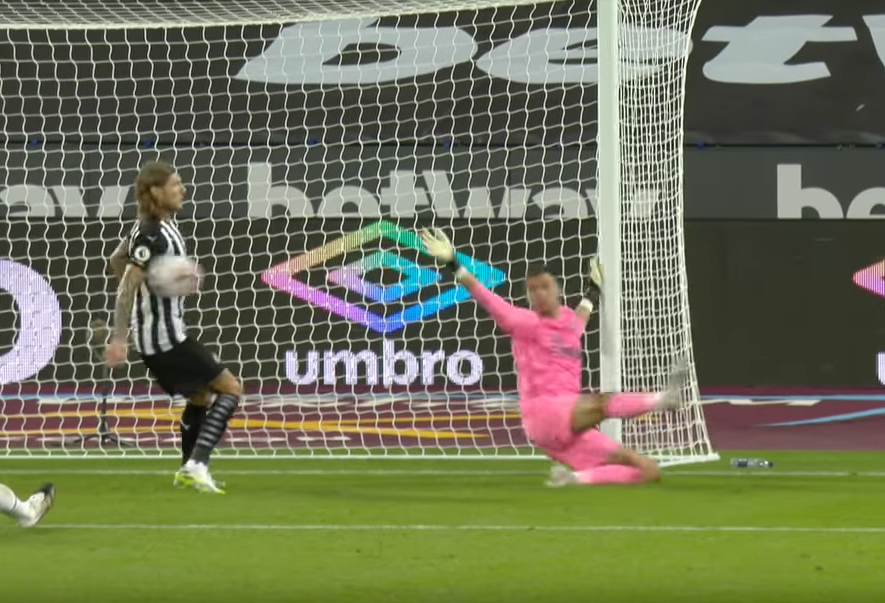
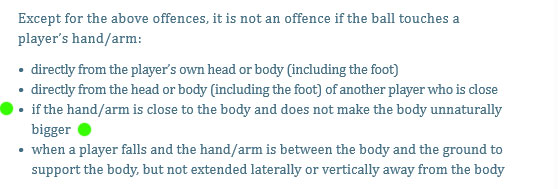
So on point of contact, the very first game brought the first goal allowed that would have been chalked off last season.
Gabriel for Arsenal on Saturday, and Mamadou Sakho for Palace (last season). Will be far fewer disallowed.



Gabriel for Arsenal on Saturday, and Mamadou Sakho for Palace (last season). Will be far fewer disallowed.

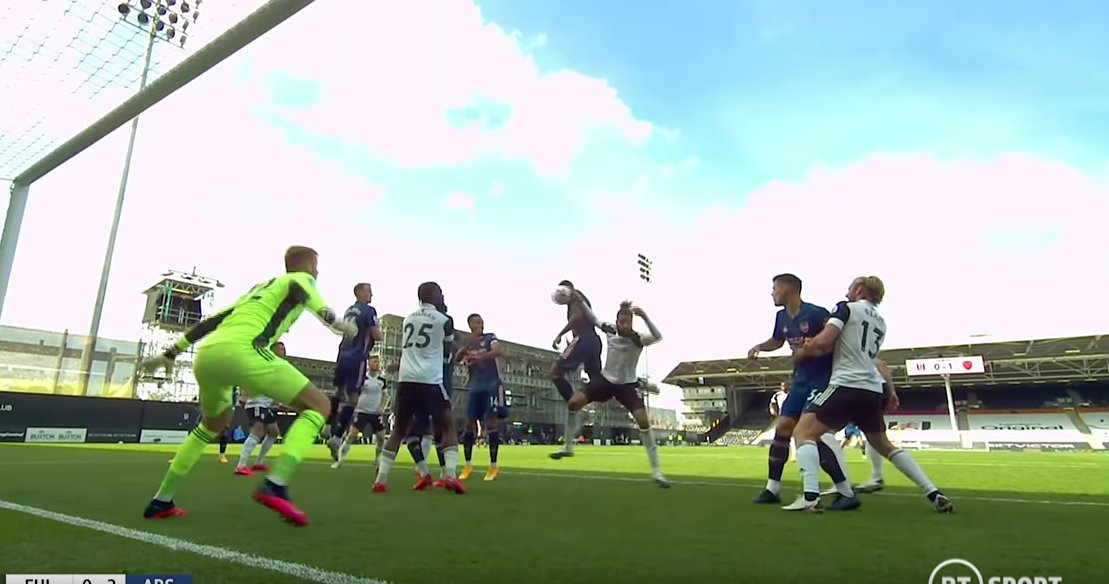
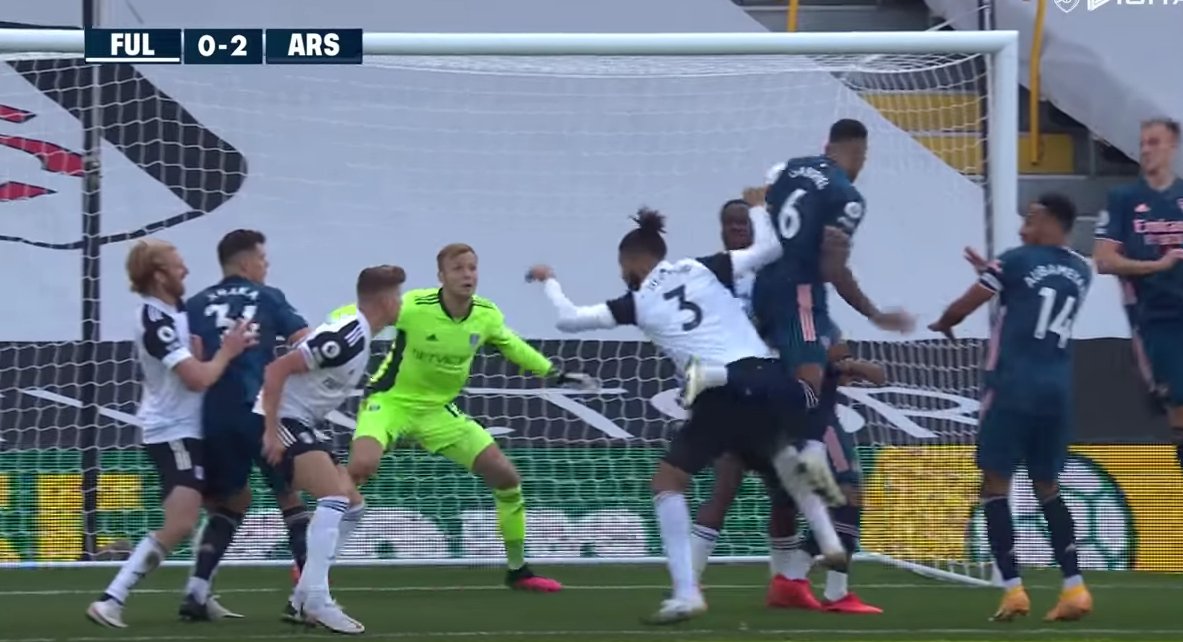
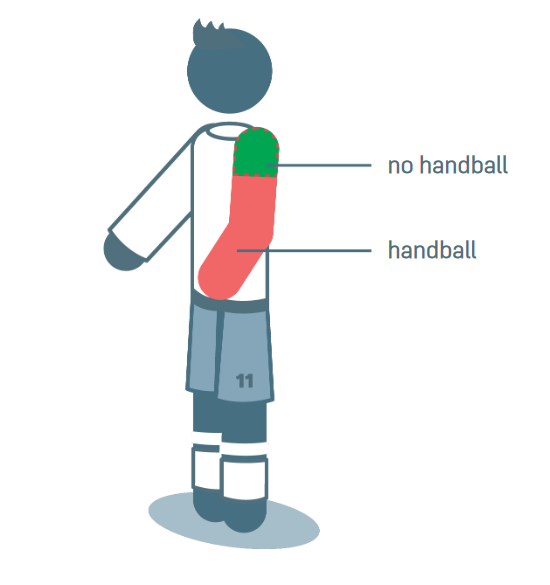
Pitchside monitors. Compare the Kyle Walker-Peters red-card review to the Eddie Nketiah red card vs. Leicester last season.
With Nketiah the referee went to the screen and nodded. On Saturday, Jon Moss had obvious dialogue with the VAR. This is how it's changed.
With Nketiah the referee went to the screen and nodded. On Saturday, Jon Moss had obvious dialogue with the VAR. This is how it's changed.
Last season, the VAR could only recommend a change if the referee's description did not fit with the TV replay.
Now, the VAR can simply tell the referee he needs to look again. It *should* make overturns easier, but it does still rely on the VAR identifying the error.
Now, the VAR can simply tell the referee he needs to look again. It *should* make overturns easier, but it does still rely on the VAR identifying the error.

And finally.... The latest exhibit for "Offside is only bad in the Premier League", as Marseille have a goal disallowed at PSG. 
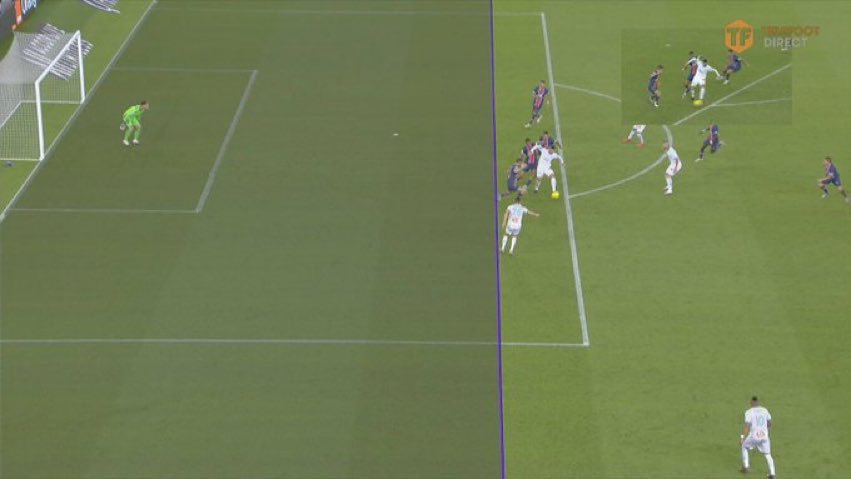
• • •
Missing some Tweet in this thread? You can try to
force a refresh





